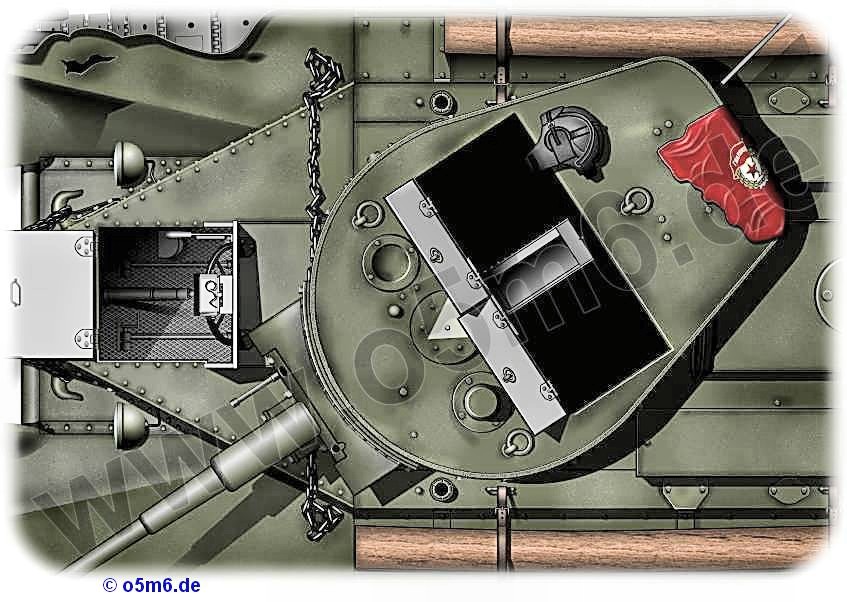
BT-5 Fast Tank
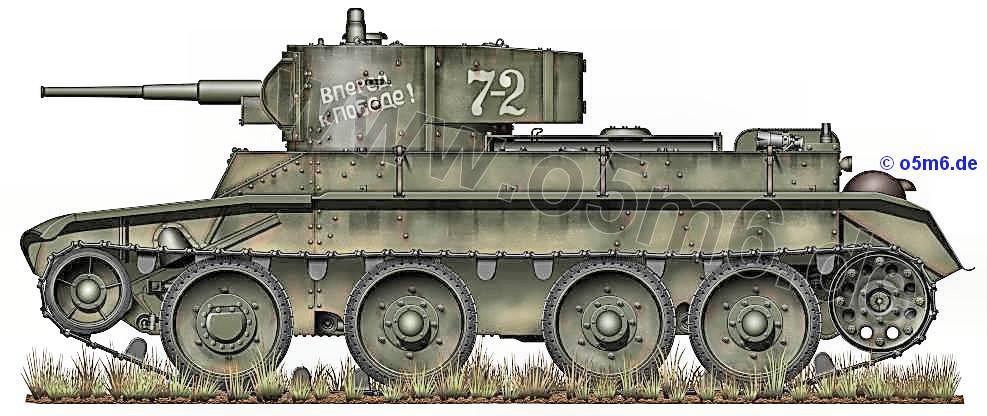
» Forward to victory ! «
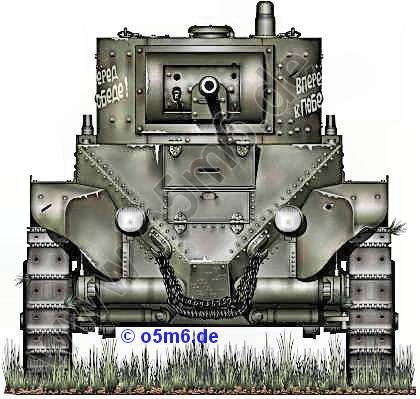
BT-5 Fast Tank
Towards the end of 1932, the Kharkov Locomotive Plant (»KhPZ«) was faced with the task of improving the old BT-2.
The new tank should receive a more powerful armament, a coaxial mounting for the machine-gun, the provision of radio equipment, and more room in the turret and fighting compartment.
Better mobility was to be achieved through the use of the newly-developed Soviet tank M-5 engine.
Designated BT-5, this further model was therefore built mounting the 45mm M1932 20K tank gun with coaxial machine-gun mounting in an improved turret with radio equipment.
The 45mm armour-piercing shot of M-1932 gun had a muzzle velocity of 2350 fps - which provided a firepower greater than that of all foreign light tanks, and certain medium tanks, right up to the outbreak of World War II.
The new tank should receive a more powerful armament, a coaxial mounting for the machine-gun, the provision of radio equipment, and more room in the turret and fighting compartment.
Better mobility was to be achieved through the use of the newly-developed Soviet tank M-5 engine.
Designated BT-5, this further model was therefore built mounting the 45mm M1932 20K tank gun with coaxial machine-gun mounting in an improved turret with radio equipment.
The 45mm armour-piercing shot of M-1932 gun had a muzzle velocity of 2350 fps - which provided a firepower greater than that of all foreign light tanks, and certain medium tanks, right up to the outbreak of World War II.
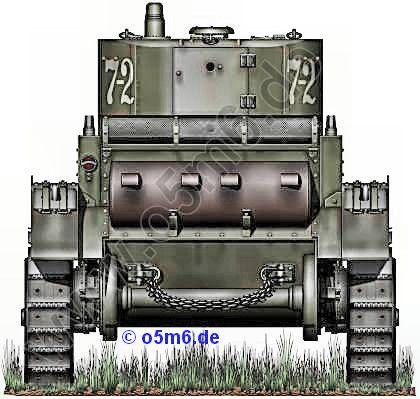
The BT-5 also had a more powerful engine - the Soviet designed M-5 12-cylinder aircraft model, specially adapted for tank use and a slightly modified version of the American Liberty engine.
The original BT-5 turret was cylindrical with a single hatch and a small rectangular bustle, but later models had a faired-out overhang.
Twin optical sights were provided (TOP telescopes and a PT-1 periscope).
Two shapes of the gun mantlet existed, an early welded one as well as a late forged cast one.
Another major improvement was the adoption of stronger suspension components though the armour remained unaltered.
A commander's model, provided with a 71-TK-1 radio and designated BT-5 TU (TU - »Tank Upravleniya«) was produced with a prominent frame aerial around the turret roof.
The original BT-5 turret was cylindrical with a single hatch and a small rectangular bustle, but later models had a faired-out overhang.
Twin optical sights were provided (TOP telescopes and a PT-1 periscope).
Two shapes of the gun mantlet existed, an early welded one as well as a late forged cast one.
Another major improvement was the adoption of stronger suspension components though the armour remained unaltered.
A commander's model, provided with a 71-TK-1 radio and designated BT-5 TU (TU - »Tank Upravleniya«) was produced with a prominent frame aerial around the turret roof.
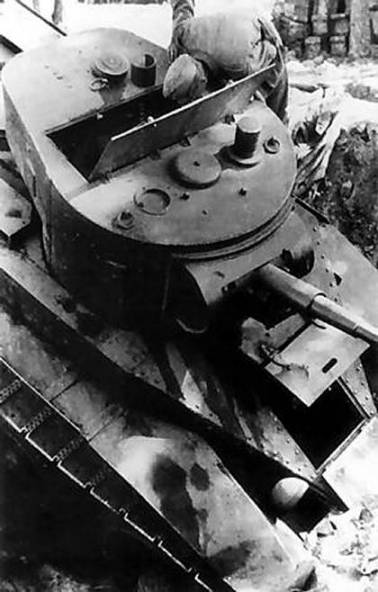
The BT-5 went into production at the end of 1932 and remainded there until 1934 when it was superseeded by the BT-7 Model 1935.
With 1884 samples produced it became a standard model and remained in service until 1941. Some BTs were also provided with fascines.
While many historians have derided the BT and T-26 as obsolete junk, in fact they were certainly superior to their most numerous German counterparts, the Pzkpfw I and Pzkpfw II in most respects, and their guns were certainly effective even against the Pzkpfw III.
Their main problem was the relative inexperience of their crews, the appaling deficiencies in the officer cadres in the wake of the purges, and the debilitating lack of spare parts.
Soviet tank output in the inter-war period exceeded that of any other nation, and in fact there were nearly as many BTs manufactured oetween 1931 and 1941 as there were tanks manufactured in the whole world from 1920-1940.
With 1884 samples produced it became a standard model and remained in service until 1941. Some BTs were also provided with fascines.
While many historians have derided the BT and T-26 as obsolete junk, in fact they were certainly superior to their most numerous German counterparts, the Pzkpfw I and Pzkpfw II in most respects, and their guns were certainly effective even against the Pzkpfw III.
Their main problem was the relative inexperience of their crews, the appaling deficiencies in the officer cadres in the wake of the purges, and the debilitating lack of spare parts.
Soviet tank output in the inter-war period exceeded that of any other nation, and in fact there were nearly as many BTs manufactured oetween 1931 and 1941 as there were tanks manufactured in the whole world from 1920-1940.
The problem was that the Soviets were fascinated with raw production numbers and ignored the crucial requirement for spare parts.
The massive losses of Soviet tanks in the summer of 1941 was due primarily to mechanical breakdown and not enemy action.
Sources : Milsom, »Russian BT series«, AFV Weapons #37, and Zaloga/Grandsen, »Soviet Fast Tanks«, Military Modelling Jan.1982
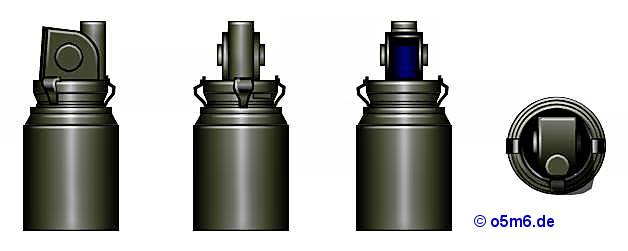
PT-1 periscope in open position from left, rear, front and top
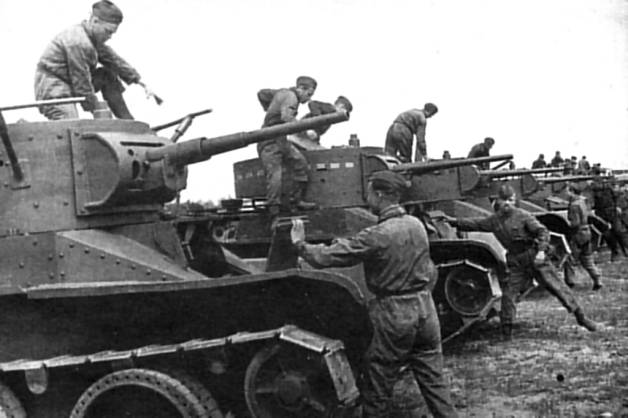
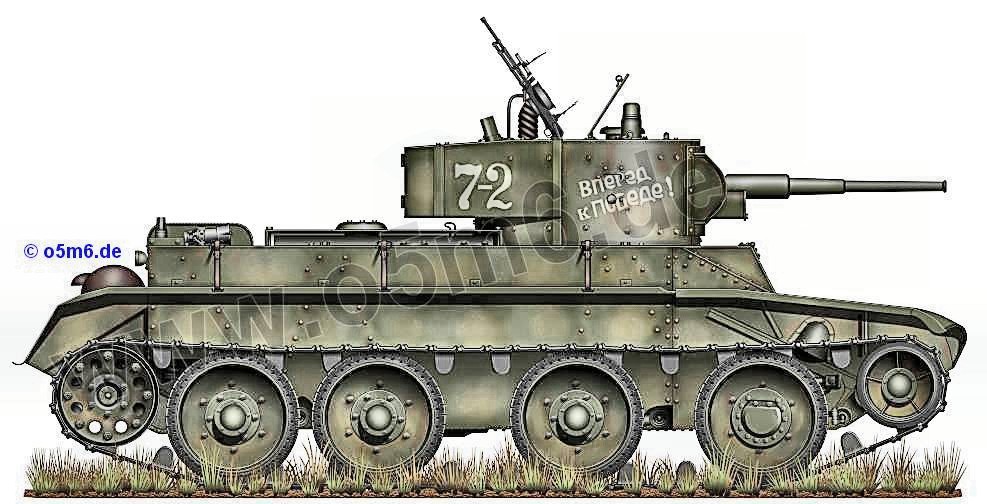
Early 7.62-mm AA machine gun mount on turret roof
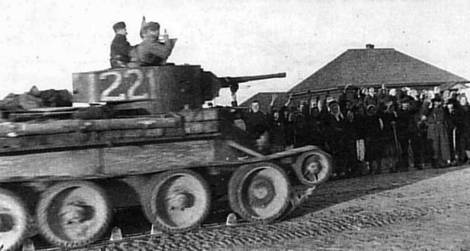
Liberation of Western Ukraine
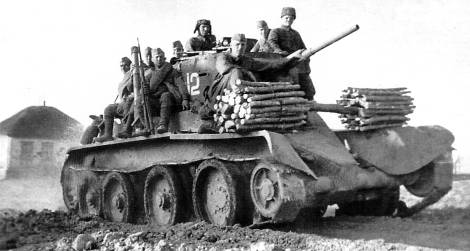
Note fascine bundles on front fenders
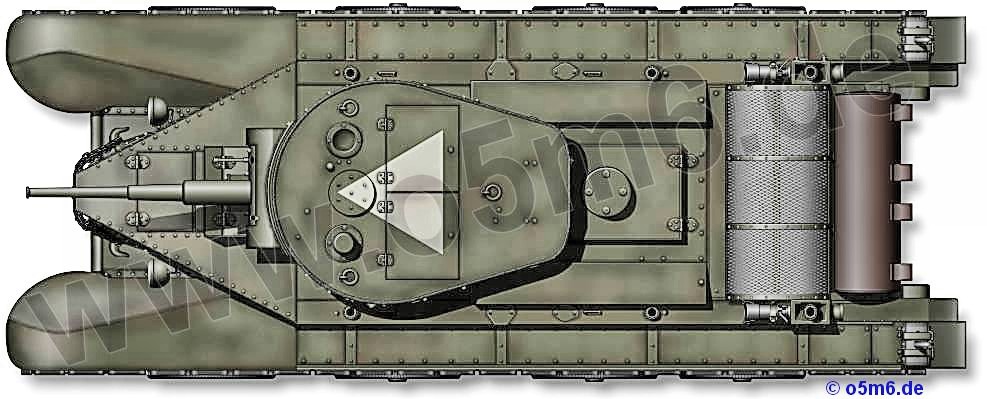
Note white air identification triangle on turret roof
Radio-equipped BT-5 TU with horseshoe-shaped antenna — Turret only
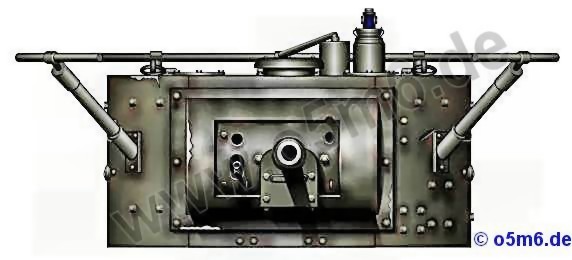
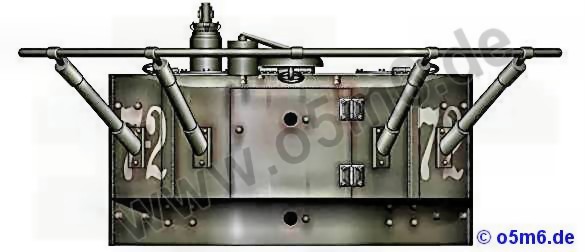
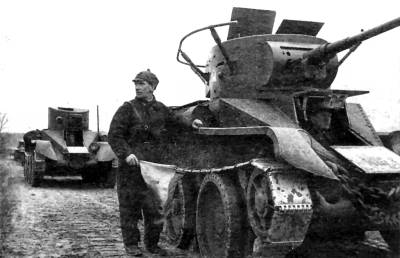
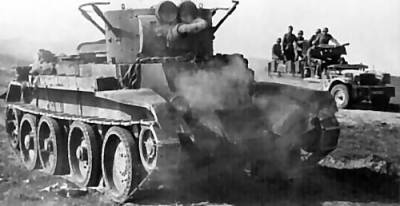

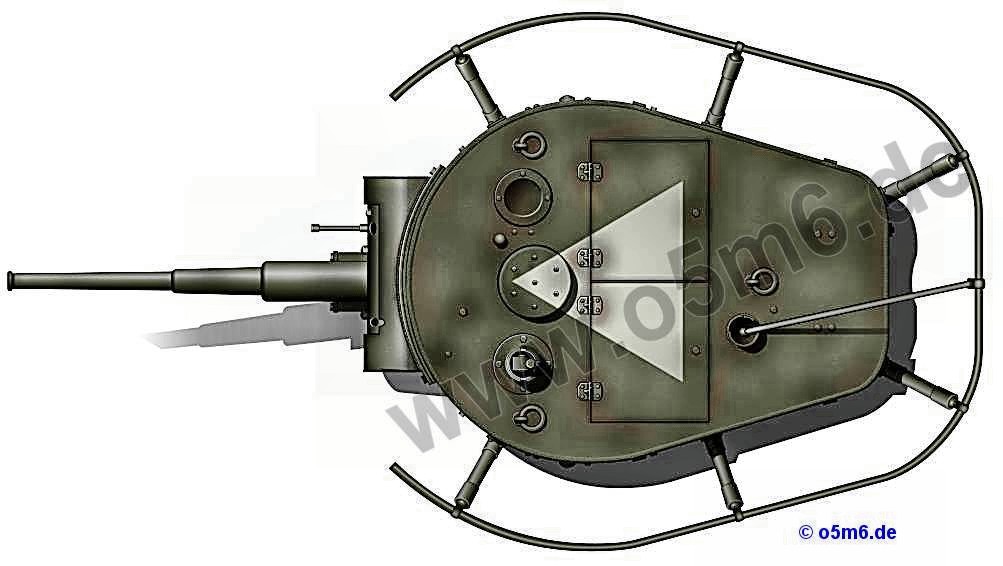

Model 1933 style turret of cylindrical shape with small rear bustle and single hatch
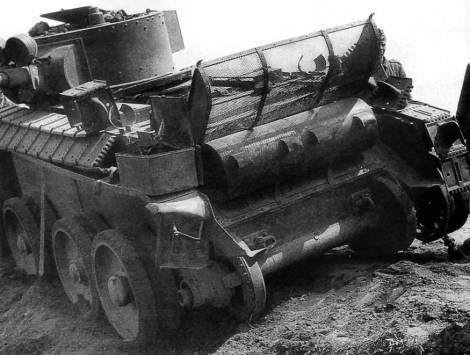
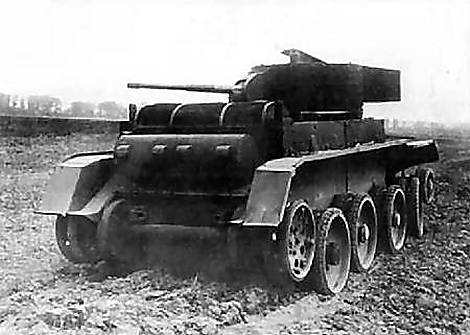

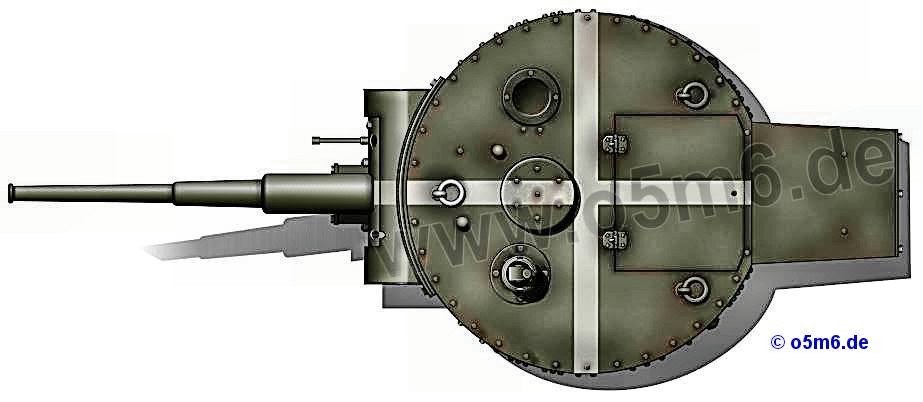
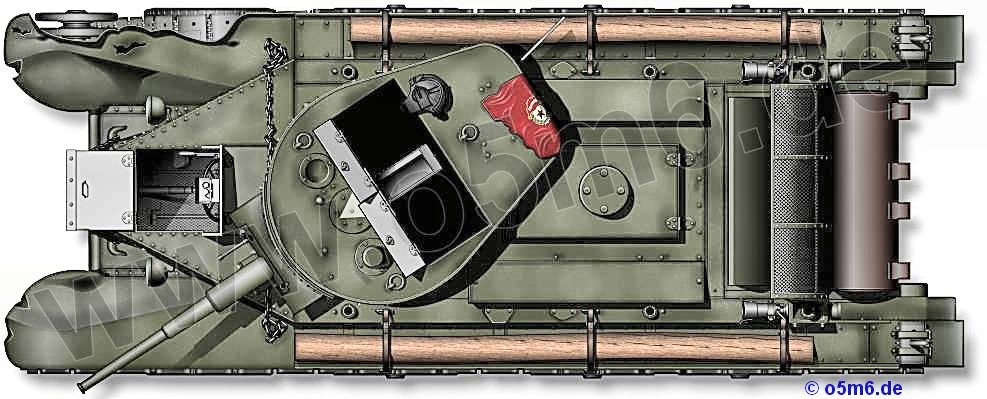
... damaged and abandoned
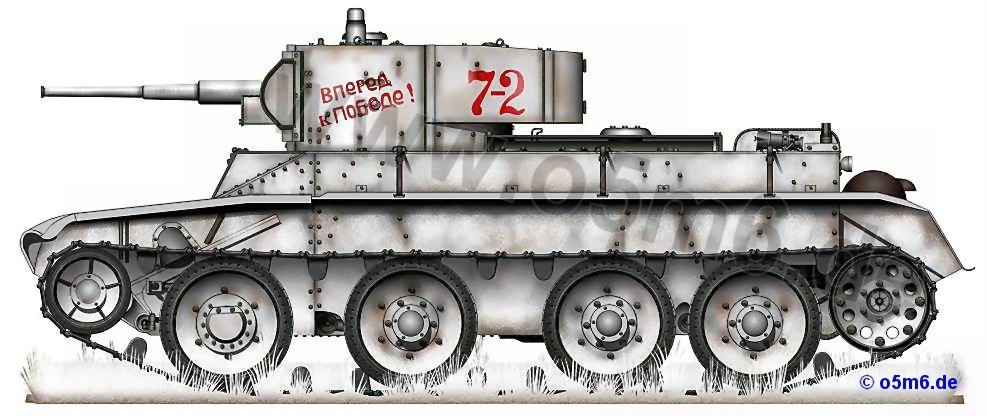
top and bottom : two common winter camouflage patterns
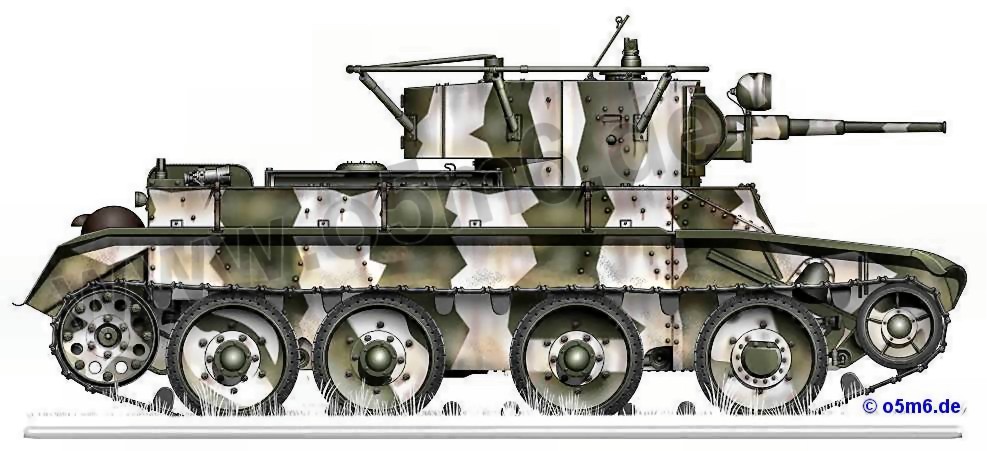
All drawings © o5m6.de .All rights reserved.
No publication in any form without the author's written permission.
Last Updated: February 19, 2008
No publication in any form without the author's written permission.
Last Updated: February 19, 2008